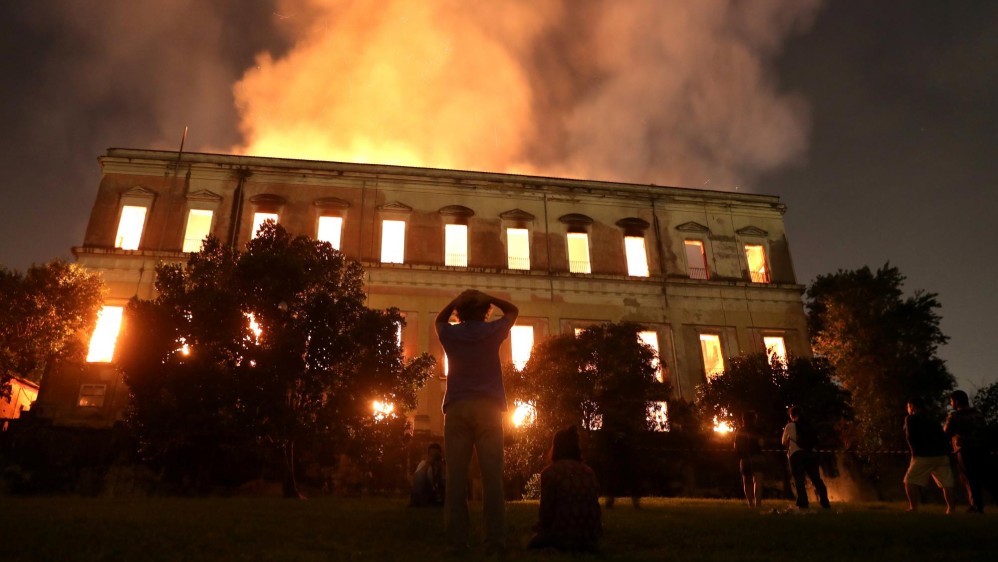On Sunday, September 2nd, the Museu Nacional Brasil caught fire. Although there was a fire station just a few blocks away, firefighters took 40 minutes to even start putting the fire out, and in the process, more than 90% of the 20 million objects that the museum housed were destroyed. As the fire burned, Brazilians gathered outside, many of them crying.
The loss of the museum is a disaster on many different levels. According to the New York Times, the items inside the museum spanned 11 million years. They included everything from Luzia, the oldest human skeleton found in the Americas, to the lace bug collection, with species not preserved anywhere else in the world. Some of the most important artefacts there were in the anthropological collection: items made by South America’s indigenous tribes, most of which are now completely gone. In some cases, the artifacts in the National Museum were the only records left of them, and now those are gone too, leaving no record of the tribes.
It wasn’t just the past that was lost when the museum burned down. Science museums are important not only for their items, but also for the research they house, and the National Museum was no different. The New Yorker explains that for the people who worked there, the fire was the destruction of a career and a future. The museum was a center for many post-grad and bachelor programs, including Social Anthropology, which was considered one of the best in Latin America. There was also a lot of investigation going on in the museum; zoology researchers studied the mollusk and insect collections. Linguistics researchers studied the records of indigenous languages, which were the sole evidence remaining that those languages existed, as nobody speaks them anymore. Now, those languages, and the other research materials, are lost forever.

The fire’s devastating blow came after three years of budget cuts from the Brazilian government. According to The Atlantic, the staff and professors in the museum were previously forced to turn to crowdfunding in order to keep up the displays and even just to pay the cleaning services, and that neglect showed. The museum did not have working sprinklers, and when firefighters arrived, they had to draw water from a nearby pond because the fire hydrants by the museum didn’t work. It took 80 firefighters over six hours to put the blaze out.
To many Brazilians, the devastation and scale of the fire has wider connotations for all of Brazil. The Washington Post writes that many people have linked the disrepair of the museum to the widespread spending cuts that have left Brazil’s infrastructure in very bad state, while corruption scandals in the Brazilian government have become increasingly more prevalent. When President Michel Temer announced the creation of the Brazilian Agency for Museums, which would keep up the museums in the country and lead the reconstruction process for the National Museum, most people assumed that he was only trying to save face. The day after the fire, police clashed with protestors outside the gates of the museum. Mistrust of the government is at an all time high, and many people aren’t enthusiastic about Brazil’s future with the current administration.
The fire is a big reminder of how important museums are, not only for the important items that they house, but for the research that goes on in them and all of the knowledge they contain. The loss of the National Museum is a huge tragedy for not only Brazil but also the world, and it’s up to other museums (and governments) around the globe to ensure that it’s not repeated.

By Anna Martinelli-Parker


































































